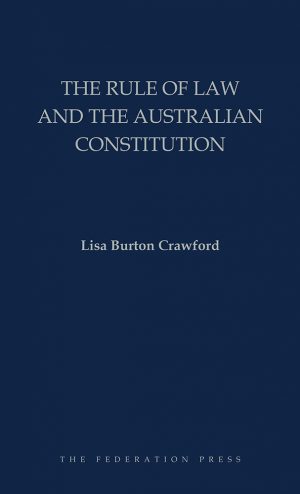Cover image:
Mary Edwards
Sir Frederick Jordan, 1947
Oil on canvas
Supreme Court of New South Wales
© New South Wales Bar Association
Photo by Darren Covell 2017
This is the first biography of Sir Frederick Jordan KCMG who was the Chief Justice of New South Wales between 1934 and 1949. Jordan was the pre-eminent New South Wales jurist of the twentieth century. He declined appointment to the High Court in 1940, but his judgments in civil and criminal law have had an enduring influence second to none due to their scholarship, pithy language, didactic tone and their continuing endorsement by the High Court.
This biography examines the life and times of the man against the backdrop of legal and political events in Australia in the years surrounding the Second World War. As acting Governor, Jordan bore the brunt of a lengthy dispute between conservative interests, including “the palace”, and Labor’s Premier McKell, who was pushing to see the appointment of New South Wales’ first Australian-born Governor. The book brings to light hitherto unpublished correspondence involving former Governor Wakehurst and the Dominions Secretary, revealing some extraordinary machinations.
Jordan was fluent in six languages and deeply conversant with English and European literature. Such knowledge permeated his judgments. His private correspondence with Lionel Lindsay and a book called Appreciations published after his death discuss everything from cinema to children’s books, from Proust to pornography, from Shakespeare to the sociology of religion, from jazz to the “degeneracy” of modern art. This was truly a renaissance man. And under the frosty exterior that earned him the nickname “Frigidaire Freddie”, there was a passionate advocate for civil liberties whose excoriating rhetoric occasionally drew fire from the High Court.
Preface
Prologue
1. Two Jordans, Two portraits
2. Family and Married Life
3. Milestones of Life and Career
4. Bibliophiles, Bohemians and Books
5. Attitudes about Religion, Women and Sports
6. Popular Culture: Cinema, Modern Art and Modern Music
7. The Work of a State Chief Justice
8. Crime and Punishment
9. At War on Many Fronts
10. Vice-Regal Toils
11. Wit, Wisdom and Wordsmithery
12. Judgecraft and Jurisprudence
13. Enduring Legacy and Reputation as a Judge
Bibliography
Index
Judicial biography presents challenges. Linda Greenhouse, doyenne of US Supreme Court commentators, in reviewing a recent biography of Justice Sandra Day O’Connor, writes in the New York Review of Books (7 November 2019, p 19):
Finding the right balance between the subject’s life and work is a challenge that confronts every judicial biographer … [M]ost judges worth writing about have not led particularly interesting lives or, if they have, once they go on the bench, the personal all but disappear from public view.
However, it is the durability of Jordan’s judicial work that encourages one to know more of his life and times. That curiosity is well satisfied by this biography.
Prof the Hon WM C Gummow AC QC, Australian Law Journal, (2020) 94 ALJ 640
Sir Frederick Jordan is indisputably amongst the finest judges that Australia has produced. This biography, coming nearly 70 years after his death, admirably fills a significant gap in the literature of Australian legal and social history.
JC Campbell, Australian Bar Review, 48 (2020)
Keith Mason’s book is excellent for three peculiar reasons.
First, it is a full biography of a judge written by a judge. This of itself is not new. Lord Campbell’s two series of Lives are obvious examples. However, the practice is comparatively rare. Perhaps this is because a judge’s professional writing is based on a two-pronged fiction that there is an irrational and a rational and that the probative is wholly a subset of the later. Also, they are inculcated with the belief that privilege is the property not of the author but of the subject.
Mason overcomes these handicaps. He is clearly in awe of his subject, but this does not prevent some chipping at clay toes. Importantly, he has sat on the same bench two generations removed. This provides the author and therefore the reader with the advantage of a temporal and spatial context which another author must lack.
David Ash, Frederick Jordan Chambers, published in the Forbes Flyer – No 41 – Autumn 2020






